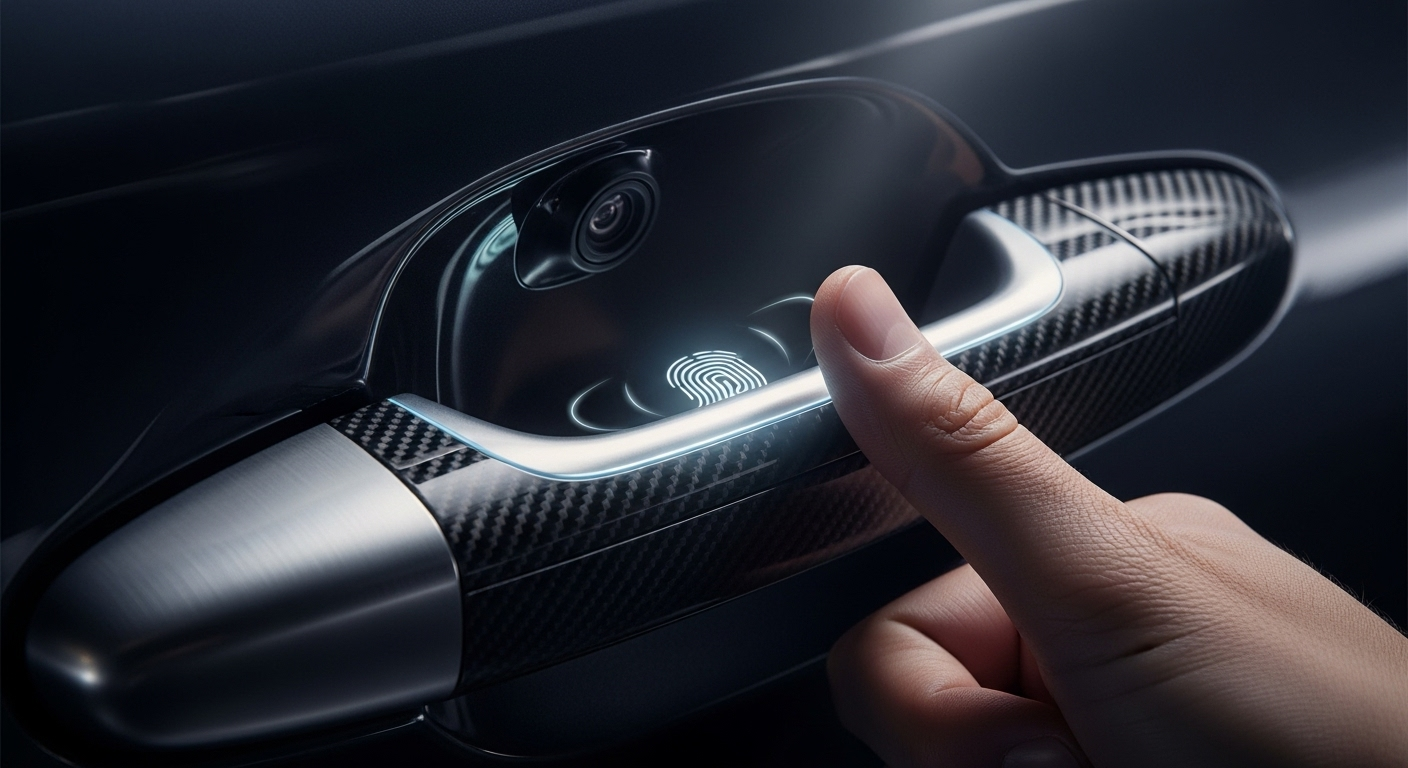Biometric Interfaces: The Next Frontier in Automotive Control
In the ever-evolving landscape of automotive technology, a groundbreaking innovation is poised to revolutionize how we interact with our vehicles. Biometric interfaces, once the stuff of science fiction, are rapidly becoming a reality in the automotive world. This cutting-edge technology promises to transform the driving experience, enhancing both safety and convenience in ways we've never seen before. Imagine a car that recognizes you, adapts to your preferences, and responds to your physiological state – all without the need for traditional controls. Welcome to the future of driving.

Early experiments with biometric systems in cars focused primarily on security features, such as fingerprint scanners for keyless entry and ignition. However, as the technology has matured, its potential applications have expanded dramatically. Today’s cutting-edge biometric interfaces are capable of much more than simply unlocking doors – they’re becoming integral to the entire driving experience.
Personalization Beyond Imagination
One of the most exciting aspects of biometric interfaces is their ability to offer unprecedented levels of personalization. As soon as a driver approaches the vehicle, facial recognition systems can identify them and begin adjusting various settings to their preferences. Seat position, mirror angles, temperature controls, and even music playlists can all be automatically customized for each individual user.
This level of personalization extends beyond mere comfort. Biometric systems can also adjust safety features based on the driver’s physical characteristics. For instance, airbag deployment force can be fine-tuned according to the driver’s height and weight, potentially reducing injuries in the event of a collision.
Enhanced Security and Theft Prevention
Biometric interfaces offer a significant upgrade to vehicle security. Traditional key fobs can be lost, stolen, or hacked, but it’s considerably more difficult to replicate someone’s biological markers. Advanced facial recognition and fingerprint scanning systems make unauthorized access to vehicles extremely challenging, potentially leading to a dramatic reduction in car thefts.
Moreover, these systems can be integrated with smartphone apps and cloud services to provide real-time tracking and remote disabling features. In the event that a vehicle is stolen, the rightful owner can quickly lock out any access attempts and assist law enforcement in recovering the vehicle.
Health Monitoring and Driver Alertness
Perhaps one of the most intriguing applications of biometric interfaces in automobiles is their potential to monitor driver health and alertness. By incorporating sensors into steering wheels and seats, cars can track vital signs such as heart rate, blood pressure, and even stress levels. This information can be used to detect signs of fatigue, illness, or impairment, potentially preventing accidents before they occur.
For instance, if the system detects that a driver’s heart rate is elevated and their steering inputs are becoming erratic, it could trigger alerts or even gradually bring the vehicle to a safe stop. This technology could be particularly beneficial for professional drivers or those with known health conditions.
Gesture Control and Eye-Tracking
Biometric interfaces are also paving the way for more intuitive control systems within vehicles. Gesture recognition technology allows drivers to control various functions with simple hand movements, reducing the need to take their eyes off the road. For example, a driver might adjust the volume of their music by moving their hand up or down in front of the dashboard, or accept a phone call with a quick swipe.
Eye-tracking systems take this concept even further. By monitoring where the driver is looking, these interfaces can provide information or activate controls without any physical input. A driver might select a navigation destination simply by looking at it on a map display, or adjust the air conditioning by glancing at a temperature control.
The Challenges of Implementation
While the potential of biometric interfaces in automobiles is immense, there are significant challenges to overcome before widespread adoption becomes a reality. Privacy concerns are at the forefront of these issues, as biometric data is highly personal and potentially sensitive. Automakers and technology companies must develop robust security measures to protect this information from breaches or misuse.
There are also technical hurdles to overcome. Biometric systems must be reliable in a wide range of conditions, from bright sunlight to complete darkness, and must be able to function accurately despite vibrations and movement inherent in a moving vehicle. Additionally, these systems need to be designed with accessibility in mind, ensuring that they can accommodate users with disabilities or those who may not be able to provide certain biometric inputs.
The Road Ahead for Biometric Interfaces
As automakers and tech companies continue to refine and expand biometric interface technologies, we can expect to see increasingly sophisticated and integrated systems in the coming years. The potential benefits in terms of safety, security, and convenience are enormous, potentially reshaping our relationship with our vehicles.
However, the successful implementation of these technologies will require careful consideration of ethical and privacy implications. As vehicles become more connected and data-driven, it will be crucial to strike a balance between technological advancement and personal privacy.
Despite these challenges, the future of biometric interfaces in automobiles looks bright. As we move towards an era of increasingly intelligent and responsive vehicles, these technologies promise to make our driving experiences safer, more comfortable, and more personalized than ever before. The car of the future won’t just be a mode of transportation – it will be a truly intelligent companion on the road.





